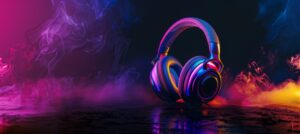This is a guest post by Glenn Fosbraey, author of Reading Song Lyrics: An Interdisciplinary and Multimodal Approach
In today’s world, where streaming services allow us instant access to pretty much every song ever recorded, I like to keep certain ‘hard copy’ traditions alive. One of these, which stretches back nearly 30 years, is to buy physical copies of my favourite artists’ albums on the day of their release, and last Friday I kept my streak alive by heading to my nearest HMV for Pulp’s More. As I was walking back to my car, removing the plastic wrapping from the CD case en route, I became acutely aware of the importance of these first experiences with a new album. On this occasion, with my CD-player-less car parked a 20-minute walk away and a half-hour drive ahead of me when I got to it, I’d be spending nearly an hour in the company of the CD before I managed to hear its contents. In times gone by, before the days of cars having bluetooth-as-standard, my first listen would come during that drive home, and in times even further gone by, it would come via my ever-skipping Discman, squeezed into a coat or trouser pocket as I walked. Whatever the form my first listen took, though, it’d always be preceded by those moments where I held the CD case, looked at the artwork on the front, the track titles on the back and maybe had a flick through the booklet at the lyrics, writing credits or additional photos. This has meant that many (if not most) of my initial connections with my favourite songs have been visual rather than aural, and, even if the specific circumstances don’t mirror mine, this will be the case for many others too. If we add to this music videos, live appearances (gigs, chat shows, album launches, book signings, etc.), print-media interviews, social media posts, live streams and marketing campaigns, all of which enhance, alter, distort or manipulate how we receive songs, we can see how much of our relationship with music is actually non-musical.
Such things aren’t exclusive to the here and now, of course. In the early 1960s, fans of The Beatles would have been exposed to many of the things I’ve just listed, as well as having access to fan clubs, fanzines and endless merchandise. But in 2025, where everything is fast and accessible, and fans are able to connect with their favourite artists online, it’s getting harder and harder for people to have a listening experience where it’s just them, the song and no other information. And once we have this extra information, be it the narrative of an accompanying music video, a social media post from the artist telling us what the lyrics are ‘about’ or a live performance at a festival with the addition of an elaborate dance routine, it’s near impossible for us to disentangle it from the song itself, meaning our experience is authentically inter-disciplinary. And it’s my ongoing fascination with this notion which has eventually led me to Reading Song Lyrics: An Interdisciplinary and Multimodal Approach.
Much has been written concerning popular music’s multi-disciplinarity, with numerous studies around musicology, music video, genre, gender and race, as well as discussions of its impact on politics, society and fashion. But the idea that these elements need to be combined in order for us to properly ‘read’ a song has gone unexplored until now. Reading Song Lyrics … encourages us to see a song as multi-faceted and inter-disciplinary; to consider what’s contained within the track itself as not just the beginning and end of our listening experience, but part of something much bigger.

